|
|

Here is my music studio. The room is not ideal and I share it with my girlfriend but sometimes you have to work with what you
got. I use hardware and software and love the mix of both worlds. I plan to include acoustic parts too in the future and owns a
couple of microphones already. As I don't play any instrument myself I will depend on my friends. I have a laptop and an external
audio interface so my studio is mobile if necessary.
I produce under the name "Trackdriver" and you can listen to a
few samples here or visit my SoundCloud to hear more.
|
|
|
I have listed some of my gear with pictures. I have written how I use the machines and have linked to additional information
where available.
|
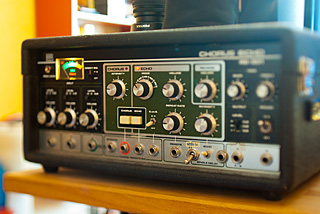
My precious Roland Chorus Echo RE-301. I got this from a very kind collegue who found it in the garbage. Everything works except
for the third tape head. I had it repaired but unfortunately it broke again. I asked the engineer for an additional feature that will
make the machine last a little longer. Take a closer look at the bottom row where all connections are and you will see a switch. This
turns the motor on and off so I can use the chorus and spring reverb alone.
|
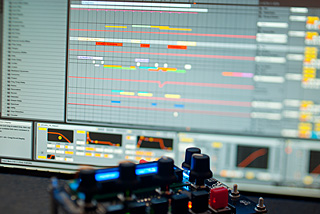
My host is the Ableton Live 8. It's not the Suite but you can hint Sampler
in the track view. I own some hardware synthesizers and you see one of them in the foreground. It's a
Shruthi-1 that I bought as a kit from Mutable Instruments
and I assembled it myself. I'm not a pro with the soldering iron but it actually works. Maybe I'll build a case for it too in the
future. I use the Shruthi-1 for basses and I sample it often for fat polyphonic sounds.
|
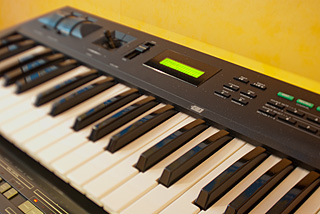
Kawai K1 is the first synthesizer I bought myself.
It's a digital budget synth with no filters but is still capable of strange sounds. There are three cool things on the K1. The first
is that the envelopes has a delay before the attack so you can emulate filter sweeps with clever choices of waveforms. The second is
the amplitude modulation that can produce everything from bells to noises. The third is the joystick that lets you blend the four
oscillators in realtime à la vector synthesis.
|
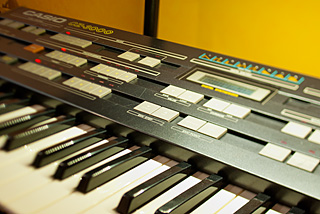
I bought the Casio CZ3000 as a christmas present to
myself. It sounds digital and plastic but has a warm almost analog feel too. Some compares the sounds with the Yamaha DX synths but
personally I don't think they remind of each other at all. There's a button for almost every feature so it's quite easy to program
though I'm still looking for a free/cheap PC editor. I use this wherever I need warm evolving sounds.
|
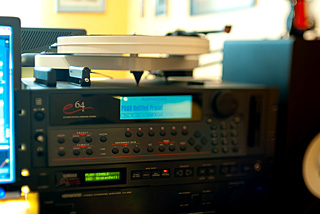
On top you find a Pro-Ject RPM 1.3 Genie
turntable. I'm no audiophile that claims analog sounds better than digital. I just like the output from this but listen to digital
media as well.
The E-mu e64 sampler was very expensive at the release and you get it for nothing today. Except for pure sampling purposes I use
it as a second recorder. I sample the output from Ableton Live, do some edits, run it through the RE-301 and back into Live. The
nicest (and odd) feature is the "Transform Multiplication" tool that combines two waveforms into one. It uses a special algorithm
rather than just blending them together so you get a completely new waveform.
Yamaha TX81Z is a nice FM synth. Except for the single
sine wave you have seven additional waveforms. The TX is a bit noisy but very clinical and digital sounding overall. It's good for
"cut-through-the-mix" sounds, basses and bells. Very good for layering too if you need extra high frequencies.
|
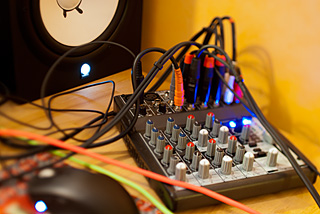
The Behringer Xenyx 1002FX mixer is the center of
my hardware setup and without it many operations would be very tedious. The equalizers are good and overloading the channels
(especially the two first) will add additional harmonies and grit in a nice way. The Xenyx FX has built-in effects and you can get
interesting blends if you mix those with external send effects.
You see the lower part of the right
Yamaha HS80M active monitor
in the background but you figured it out already on the iconic white bass cone.
|






